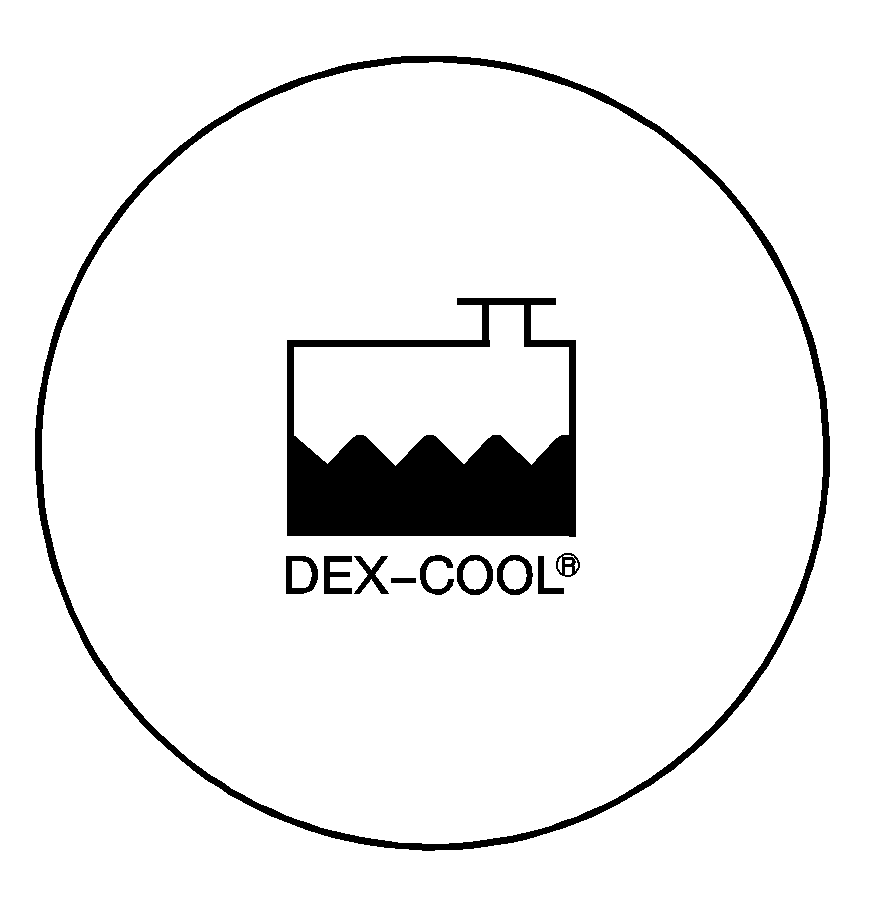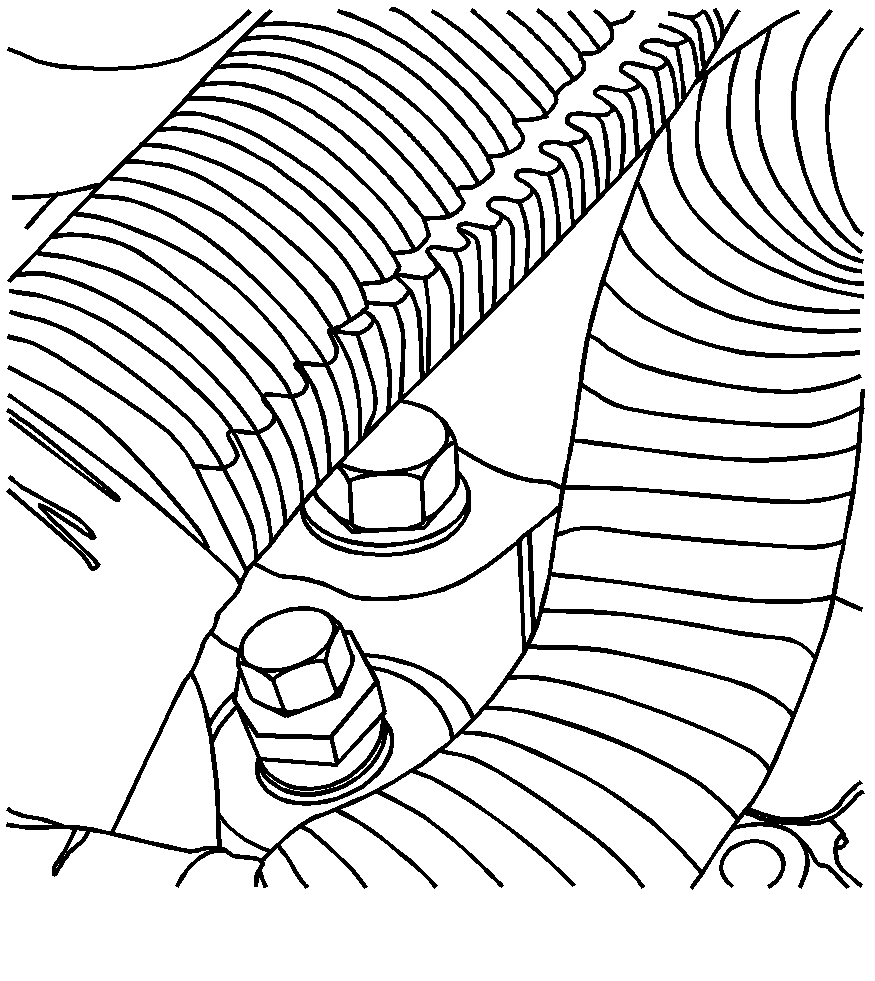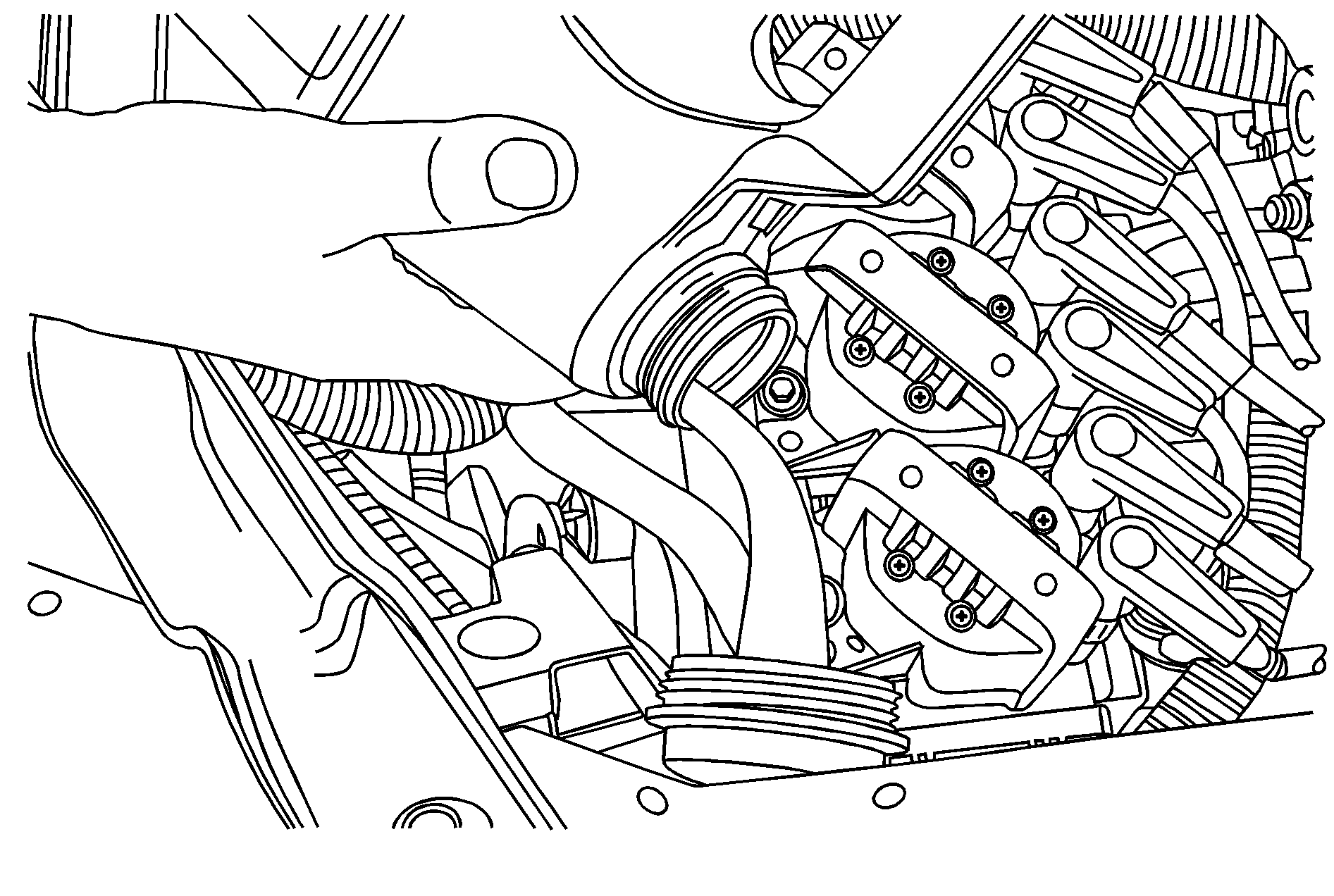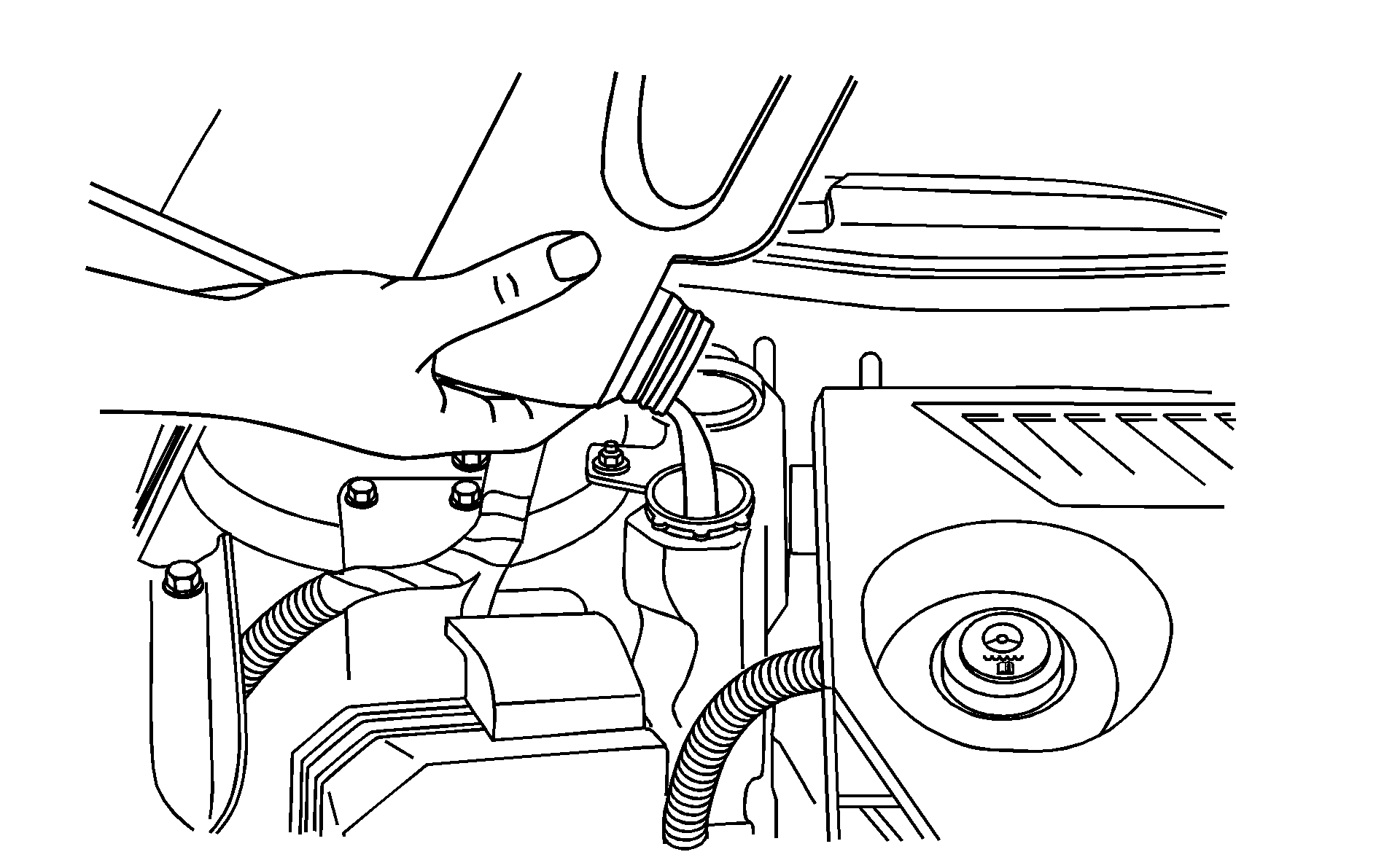The cooling system in the vehicle is filled with DEX-COOL® engine coolant. This coolant is designed to remain in the vehicle for five years or 150,000 miles (240 000 km), whichever occurs first.
The following explains the cooling system and how to check and add coolant when it is low. If there is a problem with engine overheating, see Engine Overheating.
What to Use
Caution: Adding only plain water to the cooling system can be dangerous. Plain water, or some other liquid such as alcohol, can boil before the proper coolant mixture will. The vehicle's coolant warning system is set for the proper coolant mixture. With plain water or the wrong mixture, the engine could get too hot but you would not get the overheat warning. The engine could catch fire and you or others could be burned. Use a 50/50 mixture of clean, drinkable water and DEX-COOL® coolant.
Use a 50/50 mixture of clean, drinkable water and DEX-COOL® coolant. If using this mixture, nothing else needs to be added. This mixture:
| • | Gives freezing protection down to -34°F (-37°C), outside temperature. |
| • | Gives boiling protection up to 265°F (129°C), engine temperature. |
| • | Protects against rust and corrosion. |
| • | Will not damage aluminum parts. |
| • | Helps keep the proper engine temperature. |
Notice: If an improper coolant mixture is used, the engine could overheat and be badly damaged. The repair cost would not be covered by the vehicle warranty. Too much water in the mixture can freeze and crack the engine, radiator, heater core, and other parts.
Notice: If extra inhibitors and/or additives are used in the vehicle's cooling system, the vehicle could be damaged. Use only the proper mixture of the engine coolant listed in this manual for the cooling system. See Recommended Fluids and Lubricants for more information.
Checking Coolant
The vehicle must be on a level surface when checking the coolant level.
Check to see if coolant is visible in the coolant recovery tank. If the coolant inside the coolant recovery tank is boiling, do not do anything else until it cools down. If coolant is visible but the coolant level is not at or above the FULL COLD mark, add a 50/50 mixture of clean, drinkable water and DEX-COOL® coolant at the coolant recovery tank, but be sure the cooling system is cool before this is done.

The coolant recovery tank is located in the engine compartment toward the rear of the engine on the passenger side of the vehicle.
If your vehicle is equipped with the 5.3L engine the coolant recovery tank is located in the engine compartment toward the rear of the engine on the driver side of the vehicle See Engine Compartment Overview for more information on location.
When the engine is cold, the coolant level should be at the COLD FILL line or a little higher. The COLD FILL line is near the bottom of the recovery tank and has an arrow pointing down at it.
How to Add Coolant to the Recovery Tank
Caution: You can be burned if you spill coolant on hot engine parts. Coolant contains ethylene glycol and it will burn if the engine parts are hot enough. Do not spill coolant on a hot engine.
Notice: This vehicle has a specific coolant fill procedure. Failure to follow this procedure could cause the engine to overheat and be severely damaged.
If coolant is needed, add the proper DEX-COOL® coolant mixture at the coolant recovery tank.
How to Add Coolant to the Cooling System (3.8L V6 Engine)
- Turn the pressure cap slowly counterclockwise until it first stops. Do not press down while turning the pressure cap. If you hear a hiss, wait for that to stop. A hiss means there is still some pressure left.
- Then keep turning the pressure cap, but now push down as you turn it. Remove the pressure cap.
- See Engine Compartment Overview Engine Compartment Overview for more information on location.
- Fill the radiator with the proper DEX-COOL® coolant mixture, up to the base of the filler neck. See Engine Coolant Engine Coolant for more information about the proper coolant mixture.
- Rinse or wipe any spilled coolant from the engine and the compartment.
- Then fill the coolant recovery tank to the COLD FILL line.
- Put the cap back on the coolant recovery tank, but leave the radiator pressure cap off.
- Start the engine and let it run until you can feel the upper radiator hose getting hot. Watch out for the engine cooling fans.
- By this time, the coolant level inside the radiator filler neck may be lower. If the level is lower, add more of the proper DEX-COOL® coolant mixture through the filler neck until the level reaches the base of the filler neck.
- Then replace the radiator pressure cap. At any time during this procedure if coolant begins to flow out of the filler neck, reinstall the pressure cap. Be sure the pressure cap is hand-tight and fully seated.
- Check the coolant in the recovery tank. The level in the coolant recovery tank should be at the COLD FILL line when the engine is cold.

You can remove the radiator pressure cap when the cooling system, including the radiator pressure cap and upper radiator hose, is no longer hot.

Open the coolant air bleed valve located on the thermostat housing, near the upper radiator hose.

If you see a stream of coolant coming from the air bleed valve, close the valve. Otherwise, close the valve after the radiator is filled.

How to Add Coolant to the Cooling System (5.3L V8 Engine)
- If you hear a hiss, wait for that to stop. A hiss means that there is still some pressure left.
- Then keep turning the pressure cap and remove it.
- Fill the cooling system with the proper DEX-COOL® coolant mixture, up to the base of the filler neck. See Engine Coolant Engine Coolant Engine Coolant for more information about the proper coolant mixture.
- Rinse or wipe any spilled coolant from the engine and the compartment.
- Then fill the coolant recovery tank to the COLD FILL line.
- Install the coolant recovery tank cap and the pressure cap. After a day or two of driving, when the engine is cold, check the coolant level in the recovery tank. If it is low, refill it to the COLD FILL line.

You can remove the pressure cap when the cooling system, including the pressure cap and upper radiator hose is no longer hot. Turn the pressure cap slowly counterclockwise.

If the coolant in the recovery tank is constantly low, you should have a dealer/retailer service department inspect the vehicle for leaks.
